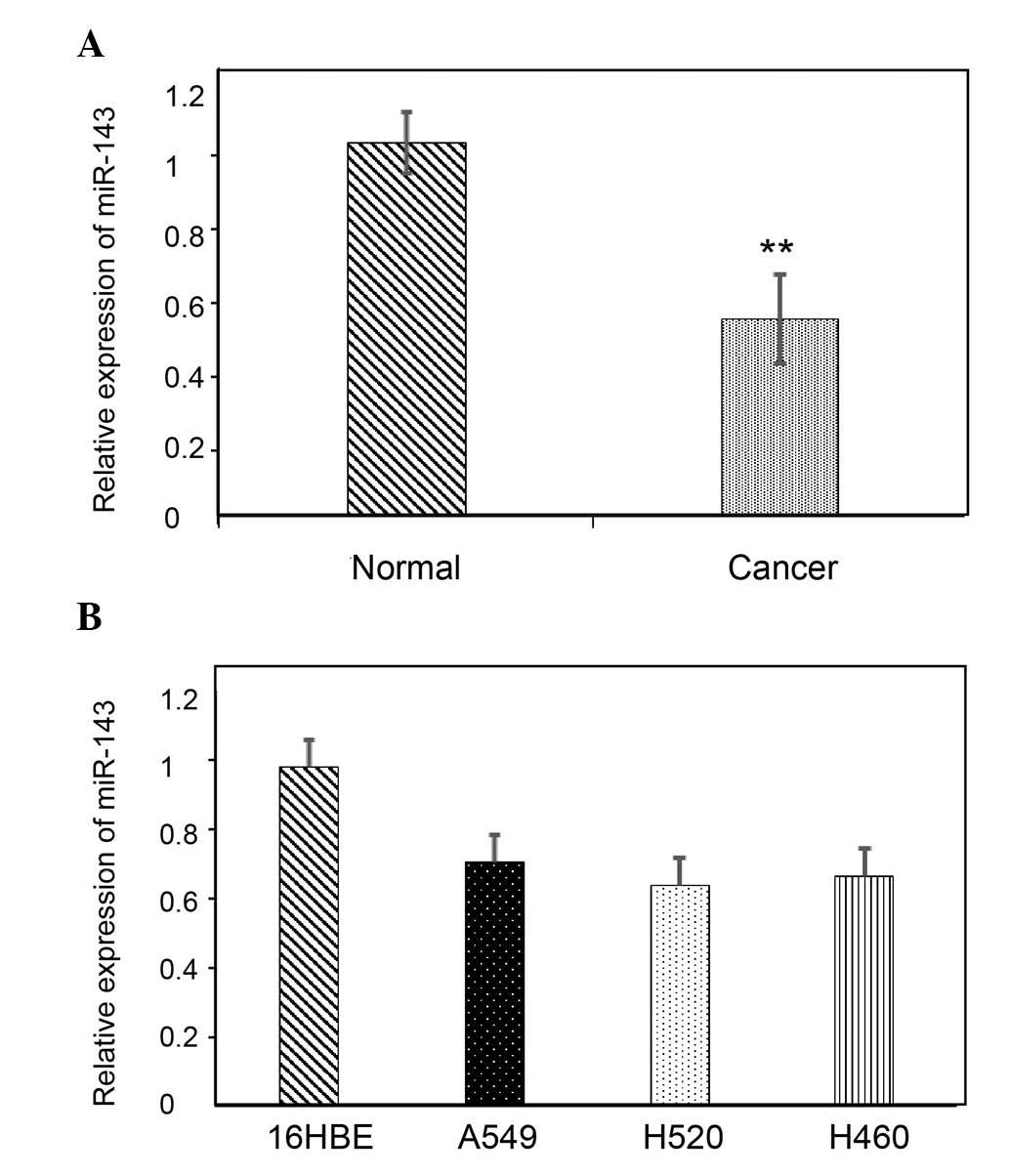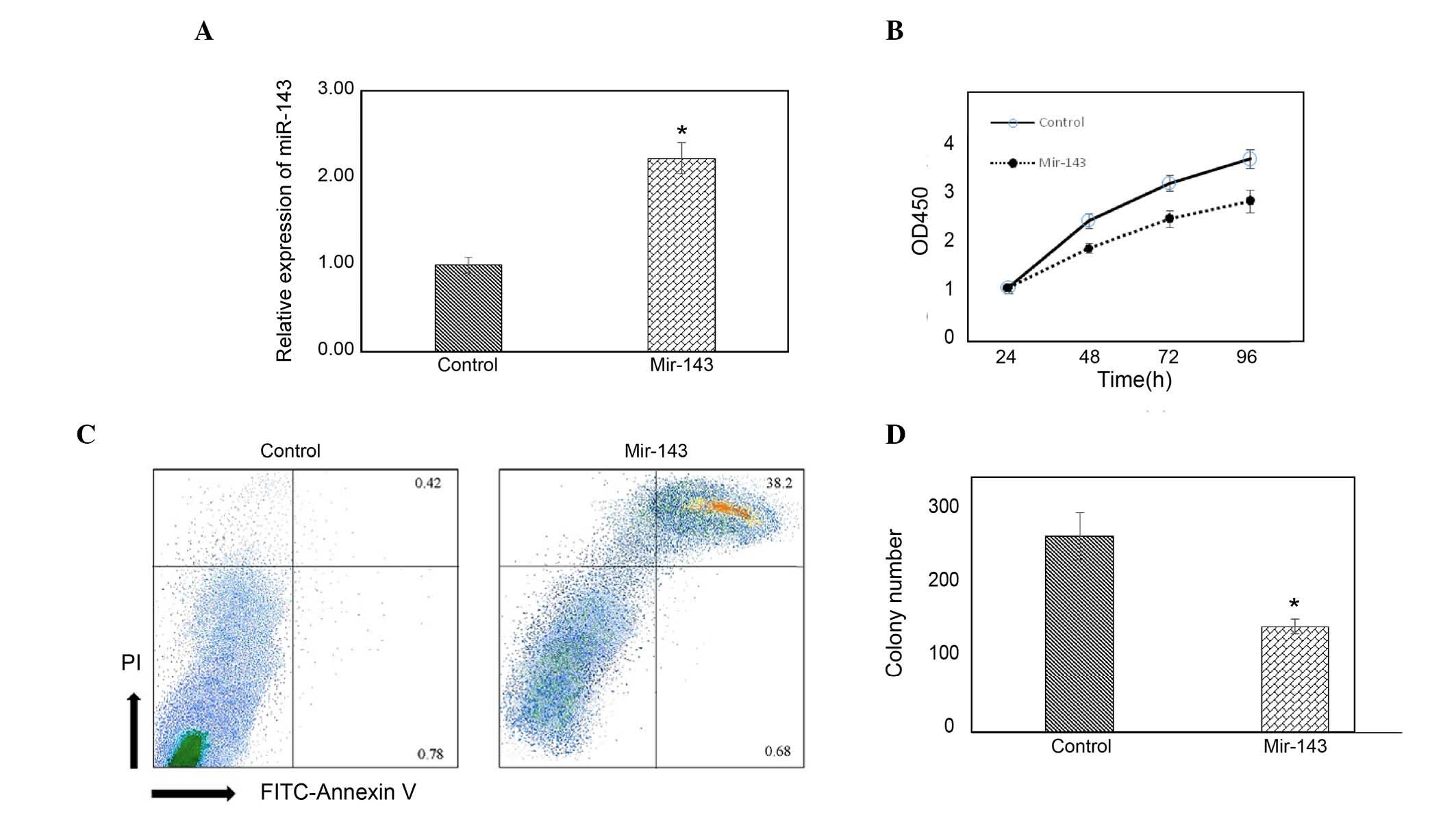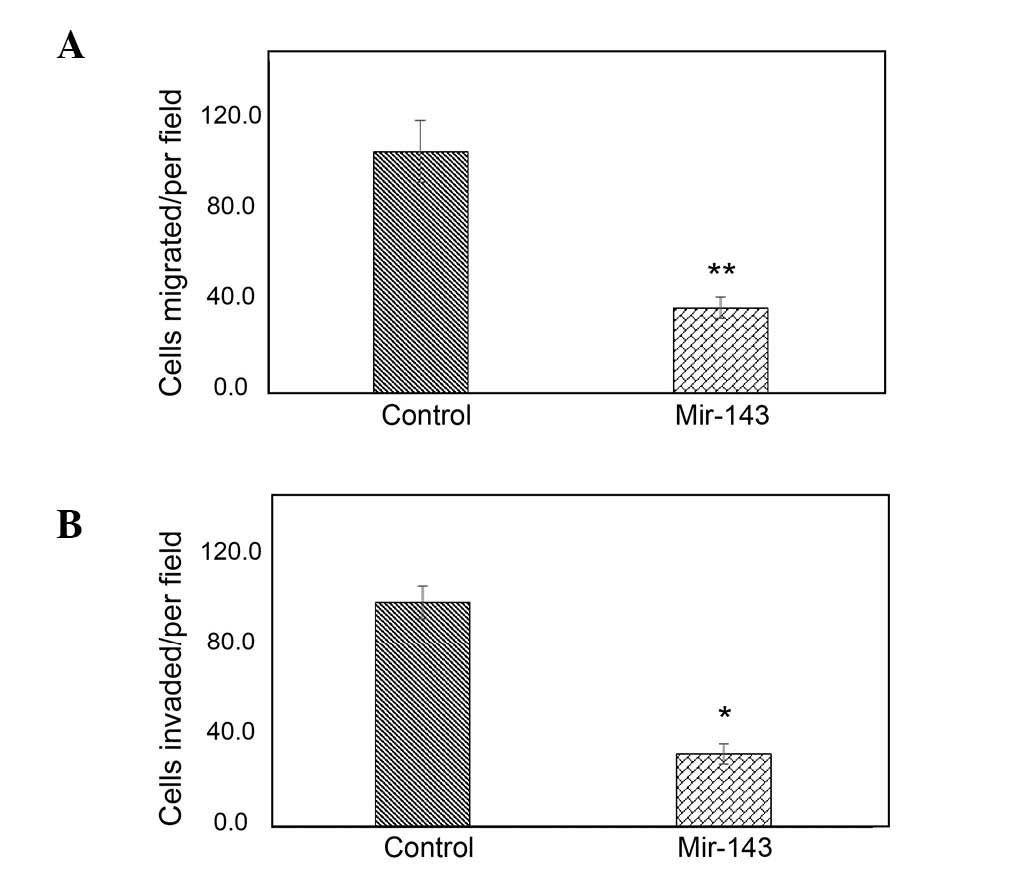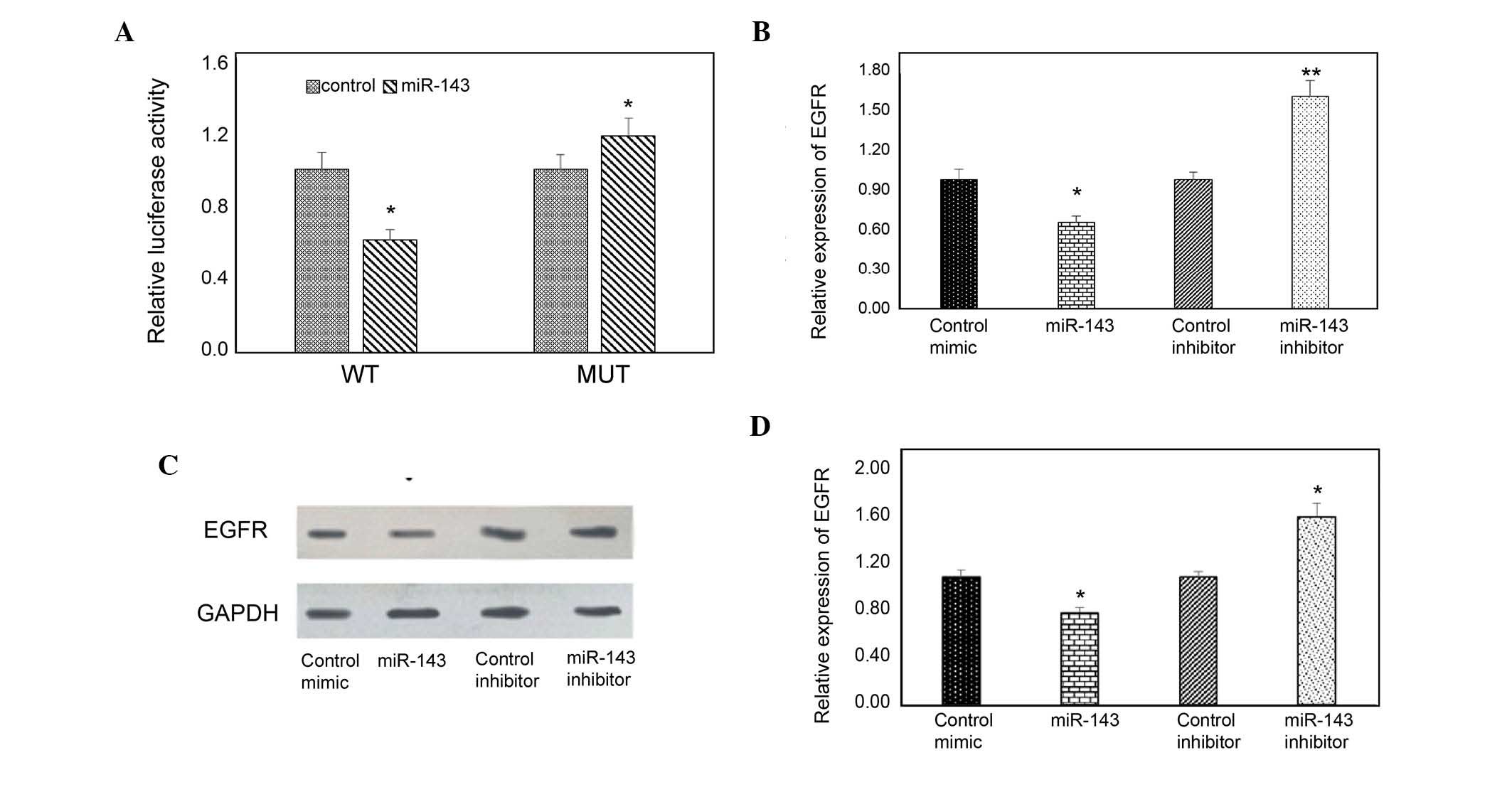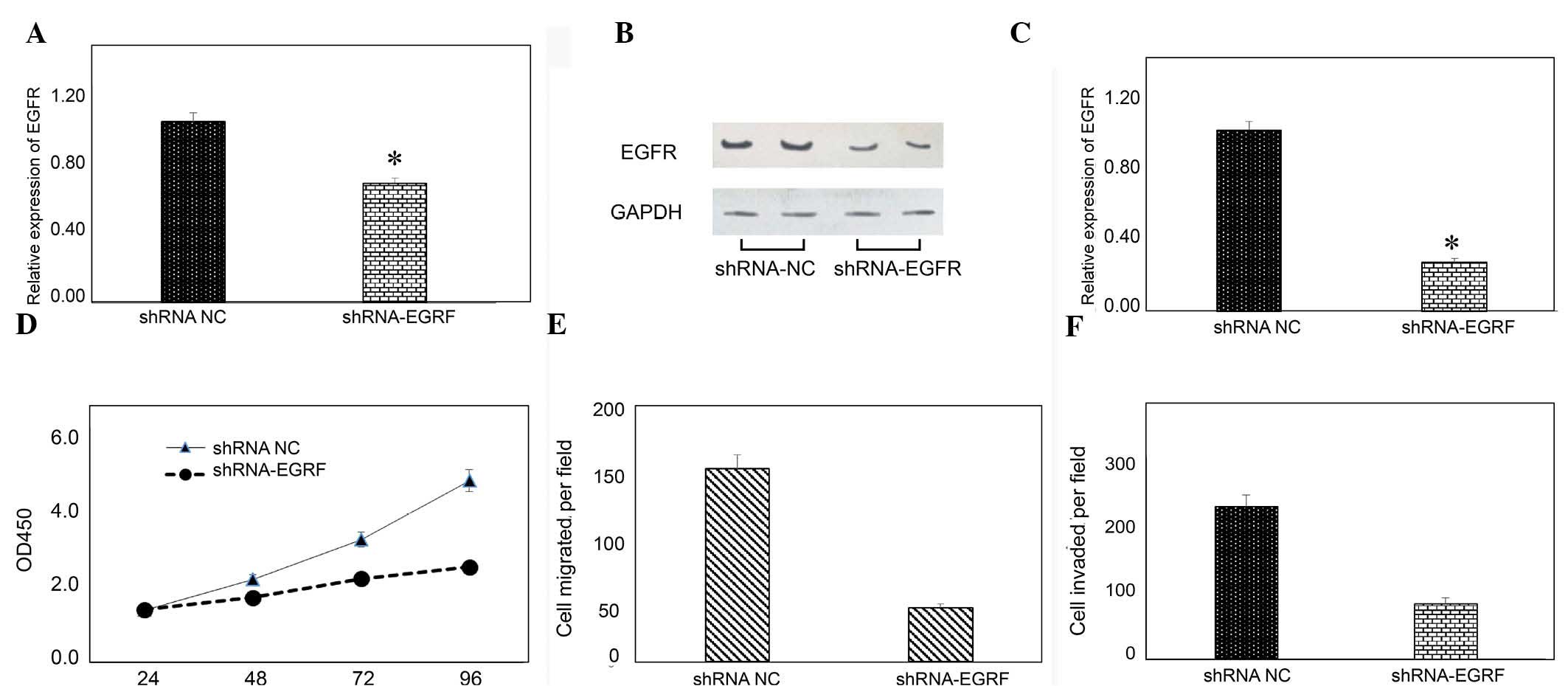|
1
|
Jemal A, Bray F, Center MM, Ferlay J, Ward
E and Forman D: Global cancer statistics. CA Cancer J Clin.
61:69–90. 2011. View Article : Google Scholar : PubMed/NCBI
|
|
2
|
Youlden DR, Cramb SM and Baade PD: The
international epidemiology of lung cancer: Geographical
distribution and secular trends. J Thorac Oncol. 3:819–831. 2008.
View Article : Google Scholar : PubMed/NCBI
|
|
3
|
Globocan, . 2002, Cancer incidence,
mortality and prevalence worldwide. International Agency for
Research on Cancer. http://www-dep.iarc.fr/Accessed January 17,
2008. PubMed/NCBI
|
|
4
|
Xu W, Yang G, Xu Y, Zhang Q, Fu Q, Yu J,
Yu M, Zhao W, Yang Z, Hu F, et al: The possibility of traditional
chinese medicine as maintenance therapy for advanced nonsmall cell
lung cancer. Evid Based Complement Alternat Med. 2014:2789172014.
View Article : Google Scholar : PubMed/NCBI
|
|
5
|
Zarogoulidis K, Zarogoulidis P, Darwiche
K, Boutsikou E, Machairiotis N, Tsakiridis K, Katsikogiannis N,
Kougioumtzi I, Karapantzos I, Huang H and Spyratos D: Treatment of
non-small cell lung cancer (NSCLC). J Thora Dis Suppl. 4:S389–S396.
2013.
|
|
6
|
Janku F, Stewart DJ and Kurzrock R:
Targeted therapy in non-small-cell lung cancer - is it becoming a
reality? Nat Rev Clin Oncol. 7:401–414. 2010. View Article : Google Scholar : PubMed/NCBI
|
|
7
|
Toloza EM, Harpole L, Detterbeck F and
McCrory DC: Invasive staging of non-small cell lung cancer: A
review of the current evidence. Chest. 123(1 Suppl): 157S–166S.
2003. View Article : Google Scholar : PubMed/NCBI
|
|
8
|
Stone E, Allen HA, Saghaie T, Abbott A,
Daniel R, Mead RS, Kohonen-Corish M, Plit M and Morgan L: High
proportion of rare and compound epidermal growth factor receptor
mutations in an Australian population of non-squamous
non-small-cell lung cancer. Intern Med J. 44:1188–1192. 2014.
View Article : Google Scholar : PubMed/NCBI
|
|
9
|
Zhou JJ, Zheng S, Sun LF and Zheng L:
MicroRNA regulation network in colorectal cancer metastasis. World
J Biol Chem. 5:301–307. 2014. View Article : Google Scholar : PubMed/NCBI
|
|
10
|
Ning B, Gao L, Liu RH, Liu Y, Zhang NS and
Chen ZY: MicroRNAs in spinal cord injury: Potential roles and
therapeutic implications. Int J Biol Sci. 10:997–1006. 2014.
View Article : Google Scholar : PubMed/NCBI
|
|
11
|
Rebane A, Runnel T, Aab A, Maslovskaja J,
Rückert B, Zimmermann M, Plaas M, Kärner J, Treis A, Pihlap M, et
al: MicroRNA-146a alleviates chronic skin inflammation in atopic
dermatitis through suppression of innate immune responses in
keratinocytes. J Allergy Clin Immunol. 134:836–847. 2014.
View Article : Google Scholar : PubMed/NCBI
|
|
12
|
Wu HH, Lin WC and Tsai KW: Advances in
molecular biomarkers for gastric cancer: MiRNAs as emerging novel
cancer markers. Expert Rev Mol Med. 16:e12014. View Article : Google Scholar : PubMed/NCBI
|
|
13
|
Schmidt Y, Simunovic F, Strassburg S,
Pfeifer D, Stark GB and Finkenzeller G: miR-126 regulates
platelet-derived growth factor receptor-α expression and migration
of primary human osteoblasts. Biol Chem. 396:61–71. 2015.
View Article : Google Scholar : PubMed/NCBI
|
|
14
|
Nagpal N and Kulshreshtha R: MiR-191: An
emerging player in disease biology. Front Genet. 5:992014.
View Article : Google Scholar : PubMed/NCBI
|
|
15
|
Ibrahim SA, Hassan H and Gotte M:
MicroRNA-dependent targeting of the extracellular matrix as a
mechanism of regulating cell behavior. Biochim Biophys Acta.
1840:2609–2620. 2014. View Article : Google Scholar : PubMed/NCBI
|
|
16
|
Orang AV and Barzegari A: MicroRNAs in
colorectal cancer: From diagnosis to targeted therapy. Asian Pac J
Cancer Prev. 15:6989–6999. 2014. View Article : Google Scholar : PubMed/NCBI
|
|
17
|
Adams BD, Kasinski AL and Slack FJ:
Aberrant regulation and function of microRNAs in cancer. Curr Biol.
24:R762–R776. 2014. View Article : Google Scholar : PubMed/NCBI
|
|
18
|
Huang J, Zhang SY, Gao YM, Liu YF, Liu YB,
Zhao ZG and Yang K: MicroRNAs as oncogenes or tumour suppressors in
oesophageal cancer: Potential biomarkers and therapeutic targets.
Cell Prolif. 47:277–286. 2014. View Article : Google Scholar : PubMed/NCBI
|
|
19
|
Xu B, Niu X, Zhang X, Tao J, Wu D, Wang Z,
Li P, Zhang W, Wu H, Feng N, et al: miR-143 decreases prostate
cancer cells proliferation and migration and enhances their
sensitivity to docetaxel through suppression of KRAS. Mol Cell
Biochem. 350:207–213. 2011. View Article : Google Scholar : PubMed/NCBI
|
|
20
|
Yu S, Zhang C, Dong FS and Zhang YM:
miR-99a suppresses the metastasis of human non-small cell lung
cancer cells by targeting AKT1 signaling pathway. J Cell Biochem.
116:268–276. 2015. View Article : Google Scholar : PubMed/NCBI
|
|
21
|
Fernandez S, Risolino M, Mandia N, Talotta
F, Soini Y, Incoronato M, Condorelli G, Banfi S and Verde P:
miR-340 inhibits tumor cell proliferation and induces apoptosis by
targeting multiple negative regulators of p27 in non-small cell
lung cancer. Oncogene. 34:3240–3250. 2014. View Article : Google Scholar : PubMed/NCBI
|
|
22
|
Zhao X, Liu D, Gong W, Zhao G, Liu L, Yang
L and Hou Y: The toll-like receptor 3 ligand, poly(I:C), improves
immunosuppressive function and therapeutic effect of mesenchymal
stem cells on sepsis via inhibiting MiR-143. Stem Cells.
32:521–533. 2014. View Article : Google Scholar : PubMed/NCBI
|
|
23
|
Momeni M, Reza MM, Zainodini N,
Hassanshahi G and Arababadi MK: MiR-143 induces expression of AIM2
and ASC in Jurkat cell line. Iran J Immunol. 10:103–109.
2013.PubMed/NCBI
|
|
24
|
Zeng XL, Zhang SY, Zheng JF, Yuan H and
Wang Y: Altered miR-143 and miR-150 expressions in peripheral blood
mononuclear cells for diagnosis of non-small cell lung cancer. Chin
Med J (Engl). 126:4510–4516. 2013.PubMed/NCBI
|
|
25
|
Herbst RS: Review of epidermal growth
factor receptor biology. Int J Radiat Oncol Biol Phys. 59:S21–S26.
2004. View Article : Google Scholar
|
|
26
|
Lu Y, Wang Y, Zhang M, Liu L, Li F, Zhang
J, Ye M, Zhao H, Zhao J, Yan B and et al: HER2-siRNA delivered by
EGFR-specific single chain antibody inhibits NSCLC cell
proliferation and tumor growth. Oncotarget. 2016.
|
|
27
|
Weiss GJI, Bemis LT, Nakajima E, Sugita M,
Birks DK, Robinson WA, Varella-Garcia M, Bunn PA Jr, Haney J,
Helfrich BA, et al: EGFR regulation by microRNA in lung cancer:
Correlation with clinical response and survival to gefitinib and
EGFR expression in cell lines. Ann Oncol. 19:1053–1059. 2008.
View Article : Google Scholar : PubMed/NCBI
|
|
28
|
Livak KJ and Schmittgen TD: Analysis of
relative gene expression data using real-time quantitative PCR and
the 2(−Delta Delta C(T)) Method. Methods. 25:402–408. 2001.
View Article : Google Scholar : PubMed/NCBI
|
|
29
|
Lu J, Getz G, Miska EA, Alvarez-Saavedra
E, Lamb J, Peck D, Sweet-Cordero A, Ebert BL, Mak RH, Ferrando AA,
et al: MicroRNA expression profiles classify human cancers. Nature.
435:834–838. 2005. View Article : Google Scholar : PubMed/NCBI
|
|
30
|
Calin GA and Croce CM: MicroRNA signatures
in human cancers. Nat Rev Cancer. 6:857–866. 2006. View Article : Google Scholar : PubMed/NCBI
|
|
31
|
Phuah NH and Nagoor NH: Regulation of
microRNAs by natural agents: New strategies in cancer therapies.
Biomed Res Int. 2014:8045102014. View Article : Google Scholar : PubMed/NCBI
|
|
32
|
Bartel D P: MicroRNAs: Genomics,
biogenesis, mechanism, and function. Cell. 116:281–297. 2004.
View Article : Google Scholar : PubMed/NCBI
|
|
33
|
Cai Y, Yu X, Hu S and Yu J: A brief review
on the mechanisms of miRNA regulation. Genomics Proteomics
Bioinformatics. 7:147–154. 2009. View Article : Google Scholar : PubMed/NCBI
|
|
34
|
Garajova I, Le Large TY, Frampton AE,
Rolfo C, Voortman J and Giovannetti E: Molecular mechanisms
underlying the role of microRNAs in the chemoresistance of
pancreatic cancer. Biomed Res Int. 2014:6784012014. View Article : Google Scholar : PubMed/NCBI
|
|
35
|
Wu XL, Cheng B, Li PY, Huang HJ, Zhao Q,
Dan ZL, Tian DA and Zhang P: MicroRNA-143 suppresses gastric cancer
cell growth and induces apoptosis by targeting COX-2. World J
Gastroenterol. 19:7758–7765. 2013. View Article : Google Scholar : PubMed/NCBI
|
|
36
|
Ferreira AC, Robaina MC, Rezende LM,
Severino P and Klumb CE: Histone deacetylase inhibitor prevents
cell growth in Burkitt's lymphoma by regulating PI3K/Akt pathways
and leads to upregulation of miR-143, miR-145 and miR-101. Ann
Hematol. 93:983–993. 2014.PubMed/NCBI
|
|
37
|
Kopp F, Schnoedt M, Haase R, Wagner E,
Roidl A and Ogris M: De-targeting by miR-143 decreases unwanted
transgene expression in non-tumorigenic cells. Gene Ther.
20:1104–1109. 2013. View Article : Google Scholar : PubMed/NCBI
|
|
38
|
Ng EK, Li R, Shin VY, Siu JM, Ma ES and
Kwong A: MicroRNA-143 is downregulated in breast cancer and
regulates DNA methyltransferases 3A in breast cancer cells. Tumour
Biol. 35:2591–2598. 2014. View Article : Google Scholar : PubMed/NCBI
|
|
39
|
Blumensatt M, Greulich S, Herzfeld De Wiza
D, Mueller H, Maxhera B, Rabelink MJ, Hoeben RC, Akhyari P,
Al-Hasani H, Ruige JB, et al: Activin A impairs insulin action in
cardiomyocytes via up-regulation of miR-143. Cardiovasc Res.
100:201–210. 2013. View Article : Google Scholar : PubMed/NCBI
|
|
40
|
Yang Y, Zhang B, Li R, Liu B and Wang L:
EGFR-tyrosine kinase inhibitor treatment in a patient with advanced
non-small cell lung cancer and concurrent exon 19 and 21 EGFR
mutations: A case report and review of the literature. Oncol Lett.
11:3546–3550. 2016.PubMed/NCBI
|
|
41
|
Zhu L, Shi C, Ji C, Xu G, Chen L, Yang L,
Fu Z, Cui X, Lu Y and Guo X: FFAs and adipokine-mediated regulation
of hsa-miR-143 expression in human adipocytes. Mol Biol Rep.
40:5669–5675. 2013. View Article : Google Scholar : PubMed/NCBI
|
|
42
|
Wang Q, Cai J, Wang J, Xiong C and Zhao J:
MiR-143 inhibits EGFR-signaling-dependent osteosarcoma invasion.
Tumour Biol. 35:12743–12748. 2014. View Article : Google Scholar : PubMed/NCBI
|
|
43
|
Lu J, Xue L, Jin M and Lyu N: Expression
profiling of metastasis-related microRNAs in early esophageal
squamous cell carcinoma. Zhonghua Bing Li Xue Za Zhi. 43:313–317.
2014.(In Chinese). PubMed/NCBI
|
|
44
|
Mekenkamp LJ, Tol J, Dijkstra JR, de
Krijger I, Vink-Börger ME, van Vliet S, Teerenstra S, Kamping E,
Verwiel E, Koopman M, et al: Beyond KRAS mutation status: Influence
of KRAS copy number status and microRNAs on clinical outcome to
cetuximab in metastatic colorectal cancer patients. BMC Cancer.
12:2922012. View Article : Google Scholar : PubMed/NCBI
|
|
45
|
da Cunha Santos G, Shepherd FA and Tsao
MS: EGFR mutations and lung cancer. Annu Rev Pathol. 6:49–69. 2011.
View Article : Google Scholar
|
|
46
|
Fabian M R, Sonenberg N and Filipowicz W:
Regulation of mRNA translation and stability by microRNAs. Annual
Rev Biochem. 79:351–379. 2010. View Article : Google Scholar
|
|
47
|
Esquela-Kerscher A and Slack FJ: Oncomirs
- microRNAs with a role in cancer. Nat Rev Cancer. 6:259–269. 2006.
View Article : Google Scholar : PubMed/NCBI
|



